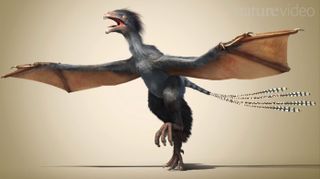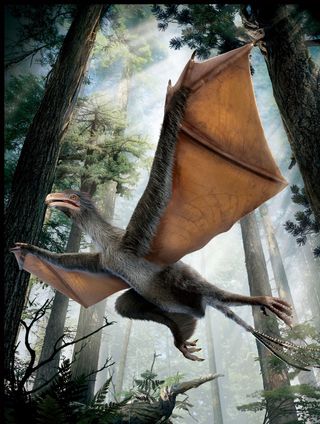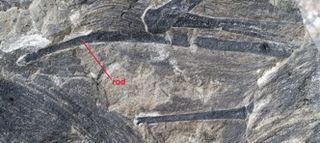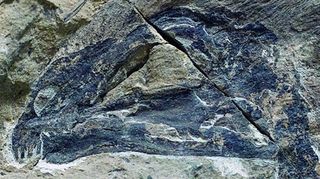In Photos: Bizarre 'Bat Dinosaur' Discovered in China
The first of its kind, a newfound wacky dinosaur sported bat-like wings with membranous tissue to help it glide through the Jurassic forests of what is now China some 160 million years ago. Here's a look at the bizarre dinosaur. [Read the full story on the bat-like dinosaur]
Bat-Dino

The feathered dinosaur would have been about the size of a pigeon, weighing less than a pound (380 grams), and covered in feathers. The researchers say the finding illustrates the many experiments in flight that occurred over evolutionary time and led to the origins of birds. This creature, however, would have represented a failed flight experiment, they added. (Image Credit: Mr. Zang Hailong, Nature doi:10.1038/nature14423)
Clumsy flier?

The genus and species name of the newfound dinosaur, Yi qi (pronounced "ee chee"), is Mandarain for Yi, meaning wing, and qi, meaning strange, both referring to the beast's bizarre wings, which resembled those of a bat. Even though the dinosaur would have been equipped with wings and feathers, the researchers don't think it was an agile flier, and instead likely flapped some and glided like a flying squirrel. (Image Credit: Dinostar Co. Ltd. )
Bizarre specimen

A farmer first spotted the dinosaur fossil in the Tiaojishan Formation of Hebei Province, China, dating to the Middle–Upper Jurassic period, or about 160 million years ago. The dinosaur is a member of a group of theropods (mostly carnivorous dinosaurs) called Scansoriopterygidae. (Image Credit: Mr. Zang Hailong)
Sign up for the Live Science daily newsletter now
Get the world’s most fascinating discoveries delivered straight to your inbox.
Feathery coat

Preserved features of the "winged" dinosaur fossil reveal feathers over the neck (not shown), along the humerus (b) and along the humerus and ulna (c). The fossil also showed soft tissue and feathers along the right forelimb and hindlimb. (Image Credit: Mr. Zang Hailong, Nature doi:10.1038/nature14423)
Radical rods

One of the most unusual features of the dinosaur fossil were rodlike structures that extended from each of the creature's wrists and were connected by patches of soft, membranous tissue; both features have never been seen in a dinosaur before, the researchers noted. (Image Credit: Mr. Zang Hailong)
Short snout

The dinosaur would have sported a robust skull with a short snout, the researchers noted in their write-up of the discovery today (April 29) in the journal Nature. (Image Credit: Mr. Zang Hailong)
Dino Anatomy

The small dinosaur had "fingers" (yellow) that supported a membrane, like a bat's wing; scientists are puzzled over how this creature may have flown, saying it may have flapped like a bat or glided like a flying squirrel. (Image Credit: Mr. Zang Hailong, Nature doi:10.1038/nature14423)

Jeanna served as editor-in-chief of Live Science. Previously, she was an assistant editor at Scholastic's Science World magazine. Jeanna has an English degree from Salisbury University, a master's degree in biogeochemistry and environmental sciences from the University of Maryland, and a graduate science journalism degree from New York University. She has worked as a biologist in Florida, where she monitored wetlands and did field surveys for endangered species. She also received an ocean sciences journalism fellowship from Woods Hole Oceanographic Institution.
Most Popular

